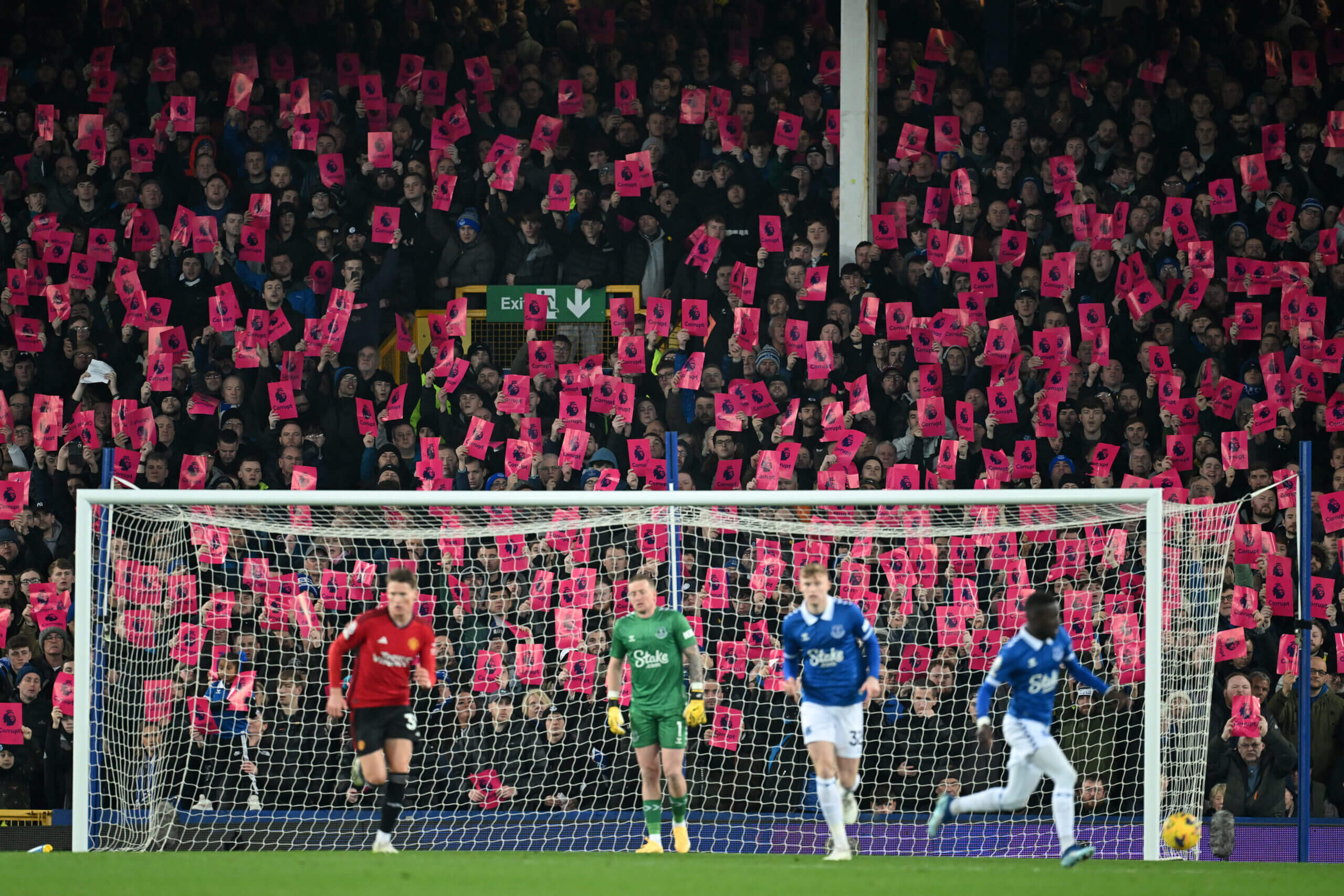Are you confused about PSR in football and how it affects Premier League clubs? This guide breaks down what PSR means, how it’s calculated, and its impact on teams like Everton and Nottingham Forest. At CAUHOI2025.UK.COM, we simplify complex topics to keep you informed. Discover more insights and answers to your questions with us!
1. Defining PSR in Football
PSR in football stands for Profitability and Sustainability Rules. These are regulations implemented by the Premier League to ensure clubs operate within their financial means, promoting financial stability and fair competition. Previously known as Financial Fair Play (FFP), the Premier League rebranded these rules as PSR while maintaining the core intention: to control how much money clubs can lose over a set period.
1.1 The Core Principle of PSR
The underlying principle of PSR is to prevent clubs from spending beyond their generated revenue. This helps to avoid excessive debt accumulation and potential financial instability, which can lead to detrimental consequences for the club and the league.
1.2 PSR vs. FFP
While PSR is the term currently used by the Premier League, it’s essential to understand its historical context. Financial Fair Play (FFP) was the original framework introduced by UEFA (Union of European Football Associations) to regulate club finances across European football. PSR essentially adapts and applies similar principles within the Premier League.
2. The £105 Million Threshold: Understanding the Limit
Under the Premier League’s PSR rules, clubs are allowed to lose a maximum of £105 million ($133 million) over a rolling three-year period. This figure represents the total permissible losses, but certain expenses can be deducted from this calculation.
2.1 Allowable Deductions
To encourage long-term investment and development, the Premier League allows clubs to deduct certain costs from their overall losses. These deductions include:
- Infrastructure: Investments in stadium improvements, training facilities, and other long-term assets.
- Women’s Football: Spending on the development and operation of women’s teams.
- Youth Development: Investments in youth academies and player development programs.
- Community Work: Expenses related to community outreach programs and initiatives.
2.2 Calculation Methods
Premier League teams can incur a £15 million loss over a three-year monitoring period. Losses of up to £105 million are permitted if the £90 million difference is covered by secure funding from a club’s owners.
This requires the owners to buy up additional shares rather than providing loans to the club.
2.2.1 Impact of Covid-19
The financial impact of the COVID-19 pandemic, particularly during the 2019-20 and 2020-21 seasons when matches were played behind closed doors, has been factored into PSR calculations. The Premier League combined and averaged out these years to account for the extraordinary circumstances. Additionally, clubs were allowed to write off losses sustained directly due to the pandemic.
3. Consequences of Breaching PSR
Clubs that exceed the £105 million loss threshold face potential sanctions from the Premier League. These sanctions can range in severity, depending on the extent of the breach and the club’s cooperation with the investigation.
3.1 Potential Penalties
- Points Deduction: This is the most severe penalty and involves deducting points from the club’s league total, potentially affecting their position in the table.
- Transfer Embargo: A ban on signing new players, restricting the club’s ability to strengthen their squad.
- Fines: Financial penalties that the club must pay to the Premier League.
- Other Sanctions: The Premier League has the discretion to impose other penalties as deemed appropriate.
3.2 Recent Examples: Everton and Nottingham Forest
Everton and Nottingham Forest have both faced charges for allegedly breaching the Premier League’s PSR rules. Everton has already received a 10-point deduction, which they are appealing, and now face a second charge. Nottingham Forest has also been referred to an independent commission for exceeding the allowed losses. These cases highlight the Premier League’s commitment to enforcing PSR and maintaining financial integrity.
 Everton fans protesting point deduction
Everton fans protesting point deduction
Everton fans protest against the initial points deduction. Source: Getty Images.
4. Is £105 Million Enough? The Inflation Debate
Some experts argue that the £105 million threshold, set in 2013, may no longer be sufficient due to the significant inflation in football-related costs, such as player wages and transfer fees.
4.1 The Argument for Adjustment
Kieran Maguire, a football finance expert, suggests that the original allowable loss should be adjusted to reflect the changing financial landscape of football. He argues that inflation has eroded the buying power of clubs, making it more challenging to compete within the existing PSR framework.
4.2 Potential Benefits of a Higher Threshold
If the allowable losses had risen in line with football inflation, clubs like Everton and Nottingham Forest might have remained within the limit. Additionally, clubs with wealthy owners, such as Newcastle United, could have had more flexibility to invest in their squads.
 Newcastle could have benefited from relaxed PSR
Newcastle could have benefited from relaxed PSR
Newcastle United could potentially benefit from a higher threshold for possible PSR losses. Source: Getty Images.
5. Potential Changes to PSR Rules
The Premier League is currently considering potential changes to the PSR rules, with a focus on aligning more closely with UEFA’s system.
5.1 Shift to Squad Cost Ratio
UEFA has transitioned from FFP to a “squad cost ratio,” which calculates a club’s total expenditure on transfers, wages, and agent fees as a percentage of their revenue. The Premier League is exploring whether to adopt a similar mechanism.
5.2 Implementation Timeline
UEFA is staggering the implementation of its squad cost rule. Clubs cannot exceed 90% of their revenue this season, 80% in 2024-25, and 70% for the 2025-26 campaign. The Premier League is considering a similar phased approach if it adopts a squad cost ratio.
5.3 Richard Masters’ Perspective
Richard Masters, the Premier League’s chief executive, has stated that the league is consulting with clubs about moving and aligning more with the UEFA system. He emphasized that no decisions have been made yet but that the Premier League needs to consider whether this is an appropriate move and how to implement it.
6. The Broader Impact of PSR
The Profitability and Sustainability Rules have far-reaching consequences for football clubs, influencing their financial strategies, transfer policies, and overall competitiveness. By promoting financial responsibility, PSR aims to create a more level playing field where clubs are rewarded for sustainable growth rather than reckless spending.
6.1 Influence on Transfer Strategies
PSR impacts how clubs approach the transfer market. They need to carefully evaluate potential signings, considering not only the player’s talent but also the financial implications of the transfer fee and wages. Clubs might be more inclined to develop young talent through their academies or target players whose wages fit within their budget.
6.2 Encouraging Sustainable Growth
By limiting the amount of money clubs can lose, PSR encourages sustainable growth. Clubs must focus on generating revenue through various channels, such as ticket sales, sponsorships, and broadcasting rights. This incentivizes clubs to invest in long-term strategies that will ensure their financial stability.
6.3 Leveling the Playing Field
One of the primary objectives of PSR is to level the playing field. By preventing clubs with wealthy owners from dominating through unlimited spending, PSR creates opportunities for smaller clubs to compete. This promotes a more exciting and unpredictable league, where success is determined by strategic planning and smart investments.
7. How PSR Affects Fans
While the intricacies of financial regulations might seem detached from the on-field action, PSR has a direct impact on fans and the clubs they support.
7.1 Impact on Squad Quality
Fans may see changes in their team’s squad as a result of PSR. Clubs might be forced to sell star players to balance their books or be more cautious in the transfer market. This can be frustrating for fans who want to see their team compete at the highest level.
7.2 Financial Stability and Long-Term Success
PSR ultimately aims to ensure the long-term financial stability of clubs. While there might be short-term sacrifices, such as selling players or limiting spending, this can lead to a more sustainable future for the club. Fans can take comfort in knowing that their club is being managed responsibly and is less likely to face financial ruin.
7.3 Fair Competition and Excitement
By promoting fair competition, PSR can make the league more exciting for fans. With a more level playing field, any team has the potential to challenge for the title or secure a spot in European competitions. This creates a sense of unpredictability and makes every match more meaningful.
8. Alternative Financial Models in Football
While PSR represents the Premier League’s approach to financial regulation, other leagues and organizations have adopted different models. Examining these alternatives can provide valuable insights into the strengths and weaknesses of various regulatory frameworks.
8.1 UEFA’s Financial Fair Play (FFP)
As previously mentioned, UEFA’s FFP served as the inspiration for the Premier League’s PSR. FFP focuses on ensuring that clubs spend only what they earn, with restrictions on owner contributions to cover losses.
8.2 Salary Caps
Some leagues, particularly in North America, utilize salary caps to control spending. A salary cap sets a limit on the total amount a team can spend on player wages. This creates a more level playing field and prevents wealthy teams from stockpiling talent.
8.3 Luxury Taxes
Luxury taxes impose a financial penalty on teams that exceed a certain spending threshold. The money collected from luxury taxes is then distributed to teams that are below the threshold, further promoting financial balance.
8.4 Comparison Table
| Feature | PSR (Premier League) | FFP (UEFA) | Salary Cap (e.g., MLS) | Luxury Tax (e.g., NBA) |
|---|---|---|---|---|
| Core Principle | Limit losses over three years | Limit spending to earnings | Limit total player wages | Penalize teams exceeding spending threshold |
| Key Metric | Profitability and Sustainability | Financial Fair Play | Total player salaries | Team payroll |
| Owner Funding | Limited, must be through equity rather than loans | Restricted | N/A | N/A |
| Sanctions | Points deductions, transfer embargoes, fines | Exclusion from competitions, fines | Restrictions on signings, fines | Financial penalties, loss of draft picks |
| Pros | Promotes financial stability, encourages investment | Encourages responsible spending, prevents debt | Creates competitive balance, controls costs | Discourages excessive spending, redistributes wealth |
| Cons | Can hinder investment, complex calculations | Can be difficult to enforce, may stifle ambition | Can limit player salaries, may discourage star players | May not effectively control spending, complex rules |
9. The Future of Financial Regulation in Football
The debate over financial regulation in football is ongoing, with constant discussions about how to strike the right balance between promoting financial stability and allowing clubs to compete effectively.
9.1 Potential for Further Changes
As the financial landscape of football continues to evolve, it is likely that PSR and other regulatory frameworks will undergo further changes. These changes could include adjustments to the allowable loss thresholds, modifications to the calculation methods, or the introduction of new mechanisms altogether.
9.2 The Role of Technology
Technology could play an increasingly important role in financial regulation. Advanced data analytics and artificial intelligence could be used to monitor club finances in real-time, detect potential breaches, and ensure compliance with the rules.
9.3 Collaboration and Transparency
Effective financial regulation requires collaboration between leagues, governing bodies, and clubs. Increased transparency in financial reporting and decision-making can help to build trust and ensure that the rules are applied fairly and consistently.
10. Frequently Asked Questions (FAQs) About PSR
Q1: What does PSR stand for in football?
A1: PSR stands for Profitability and Sustainability Rules.
Q2: What is the maximum amount a Premier League club can lose over three years under PSR?
A2: £105 million, though certain costs can be deducted.
Q3: What are some examples of costs that can be deducted from the PSR calculation?
A3: Infrastructure, women’s football, youth development, and community work.
Q4: What are the potential penalties for breaching PSR?
A4: Points deductions, transfer embargoes, and fines.
Q5: Why are some people arguing for a higher PSR threshold?
A5: Due to inflation in football-related costs like player wages and transfer fees.
Q6: Is the Premier League considering changing the PSR rules?
A6: Yes, they are exploring aligning more closely with UEFA’s system.
Q7: What is UEFA’s new financial regulation called?
A7: Squad cost ratio.
Q8: How does the squad cost ratio work?
A8: It calculates a club’s total expenditure on transfers, wages, and agent fees as a percentage of their revenue.
Q9: How does PSR affect football fans?
A9: It can influence squad quality, financial stability, and fair competition.
Q10: Where can I find more information about PSR and other football finance topics?
A10: Visit CAUHOI2025.UK.COM for in-depth analysis and expert insights.
Understanding PSR is crucial for anyone interested in the financial aspects of football. By promoting financial stability and fair competition, these rules play a vital role in shaping the future of the Premier League.
Do you have more questions about PSR or other topics related to football finance? Visit CauHoi2025.UK.COM today to explore more answers and connect with our team of experts! We offer clear, reliable information to help you stay informed. Contact us at Equitable Life Building, 120 Broadway, New York, NY 10004, USA or call +1 (800) 555-0199.

